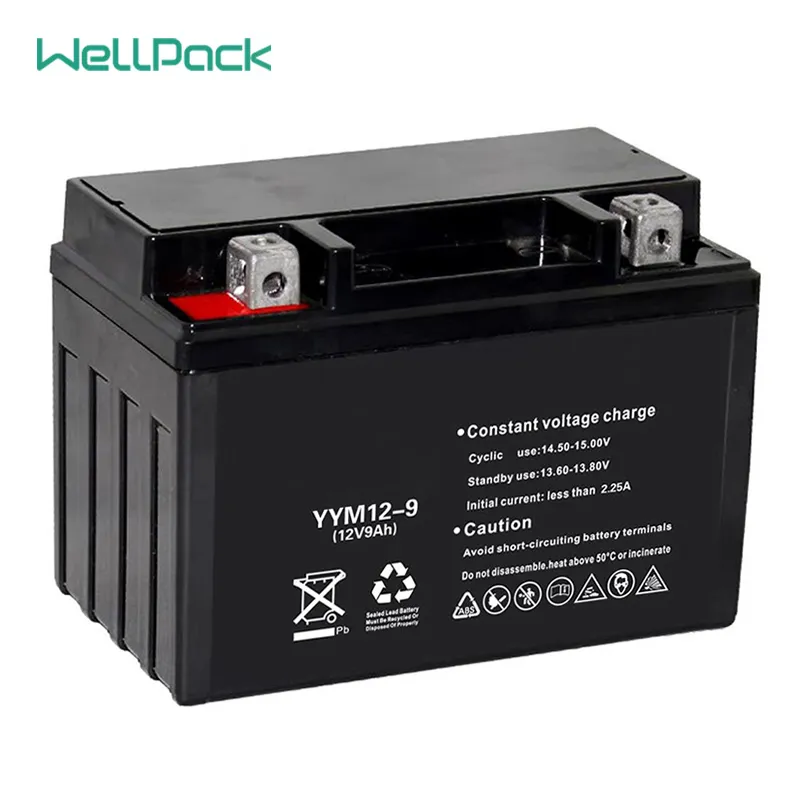
Applications of Valve-Regulated Sealed Lead-Acid Batteries
2025-10-31 17:30Classification by Application
1. Stationary Type
These batteries are used in backup power systems for electric power, coking coal chemicals, non-ferrous metallurgy, petrochemicals, finance, transportation, and more. They feature thick plates and less electrolyte, offering long lifespan and suitability for float charging.
2. Starting Type
Primarily applied in automobiles, diesel generators, and other internal combustion engines for starting, ignition, and lighting. They require high-current discharge, low-temperature starting capability, pasted thin plates, and low internal resistance.
3. Traction Type
Employed in battery vehicles, forklifts, stackers, and electromagnetic overhead cranes as power sources for traction and lighting. These have thick plates and large capacity.

Classification by Structure and Electrolyte State
1. Flooded Batteries
Also known as open-type batteries, these contain ample electrolyte that fully immerses the plates. They require periodic addition of distilled water or electrolyte, making maintenance more complex. However, they remain widely used in high-reliability scenarios with dedicated upkeep, such as backup power in electric power, telecommunications, finance, metallurgy, petrochemicals, and medical facilities.
2. Valve-Regulated Lead-Acid (VRLA) Batteries
Referred to as starved-electrolyte batteries, these have less electrolyte and use gas recombination technology to regenerate water. Under normal conditions, no electrolyte addition is needed, simplifying maintenance. They are the most common type on the market, used in DC panels, telecom power supplies, UPS, and EPS emergency systems.
3. Gel Batteries
Here, the electrolyte is in a gel state, providing better stability and lower self-discharge rates, with relatively longer service life. Though more expensive, they suit high-end telecom equipment, precision instruments, and environments demanding superior power quality and reliability, especially in cold or high-altitude regions.
Main Applications of Stationary Valve-Regulated Sealed Lead-Acid Batteries
1. UPS Uninterruptible Power Supply
Role: During normal mains operation, the UPS host converts AC to DC for battery charging while supplying stable AC to loads. In outages, the battery powers the inverter, converting DC back to AC to maintain equipment operation, such as in data center server rooms where it ensures uninterrupted power to prevent data loss.
Application Scenarios: Data centers, financial institutions, office automation, metallurgy, petrochemicals, and medical backup systems where power reliability is critical to avoid data loss or service disruptions.
2. EPS Emergency Power Supply
Role: Normally powered by mains AC for loads and battery charging; during faults, it switches to inverter mode, converting battery DC to AC for emergency equipment, like in hospital operating rooms or ICUs to sustain life-support devices.
Application Scenarios: Hospitals, fire facilities, subway stations for emergency lighting, elevator power, and vital life-safety systems.
3. DC Panels
Role: Provide stable DC for secondary equipment in power systems, such as circuit breaker operations, relay protection, and automation in substations. As storage units, VRLA batteries ensure continuous DC supply during AC failures, supporting safe grid operation.
Application Scenarios: Power plants, substations, and distribution stations as essential DC control power systems.
4. Telecom Power Supplies
Role: In base stations, they form systems with rectifiers to deliver stable 48V DC to telecom gear. During normal grid supply, rectifiers convert AC to DC for equipment and float charging batteries; in outages, batteries sustain operations, ensuring network continuity in remote areas.
Application Scenarios: Telecom base stations, transmission nodes, and core rooms across urban and rural networks.
Key Advantages of Lead-Acid Batteries
1. Mature Technology and High Reliability
With a long history, lead-acid batteries have refined technology, mature production, and robust quality control, ensuring verified performance and stability. They offer low failure rates, reliably supporting UPS, emergency systems, and vehicle starters.
2. Stable Performance and Broad Applicability
They deliver consistent voltage and current across wide temperature ranges, suiting diverse environments from hot summers to cold winters. Versatile designs meet needs like engine starting (starting type), crane traction (traction type), and backups in telecom, data centers, and grids (stationary type).
3. Clear Cost-Benefit Advantages
Low costs stem from abundant, stable-priced materials like lead, sulfuric acid, and ABS casings, plus simple, efficient production. High recyclability—over 90% for lead and plastics—reduces environmental impact, resource use, and lifecycle costs via closed-loop utilization.
4. Safety and Ease of Maintenance
VRLA designs with gas recombination and safety valves prevent leaks, acid mist, and external flames, enhancing safety. Routine checks on appearance and connections suffice, minimizing labor and costs, ideal for sites without dedicated staff.
